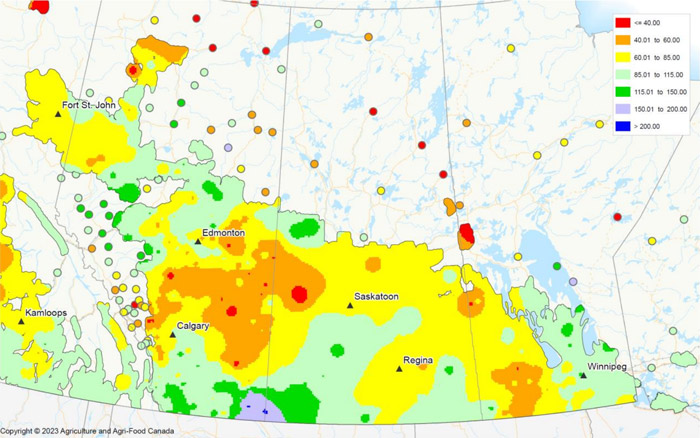Manitoba Transportation and Infrastructure’s Hydrologic Forecast Centre has released the 2023 Manitoba Basins Fall Conditions Report, which indicates soil moisture levels at the time of freeze-up, precipitation received over the fall and summer, and river and lake levels are all normal to below normal throughout Manitoba.
“While the fall report shows our rivers and lakes have the capacity to receive a normal amount of spring run-off, this will depend on precipitation and snowmelt rate,” said Transportation and Infrastructure Minister Lisa Naylor. “We will continue to closely monitor the conditions and prepare for potential outcomes.”
The report notes although much of the November precipitation fell as snow, warmer temperatures allowed for the snow to melt and contribute to soil moisture levels, leaving very little snow accumulation on the ground.
The report also contains long-term forecasted winter and spring precipitation as a general indication of probable future weather, as well as spring flows and levels throughout Manitoba basins. Global climate models project the effect of El Nino weather patterns across the globe. As a result, most Manitoba basins are forecasted to receive normal to below-normal precipitation and above-normal temperatures for the remainder of the winter and spring.
These factors are possible indicators of lower spring runoff levels, but the long-term spring runoff forecast for spring 2024 cannot be confirmed as conditions could change, the minister noted.
The Hydrologic Forecast Centre continues to work collaboratively with Environment and Climate Change Canada, the National Weather Service and flood forecasters in neighbouring jurisdictions to monitor watershed conditions and winter precipitation patterns. The Manitoba Emergency Management Organization continues proactive preparations for emergency response efforts in advance of spring runoff.
The minister noted further basin condition updates will be released as necessary.





